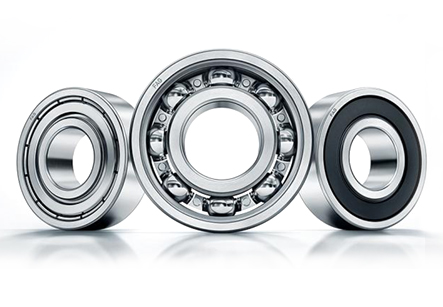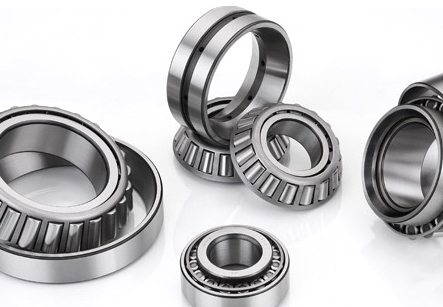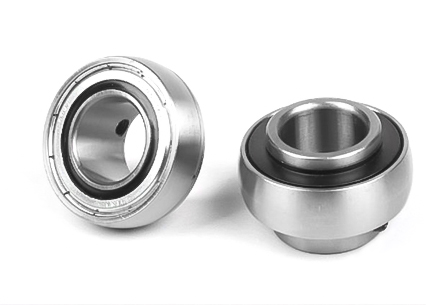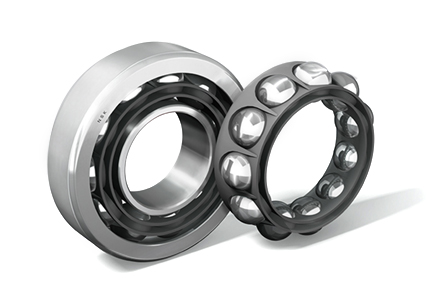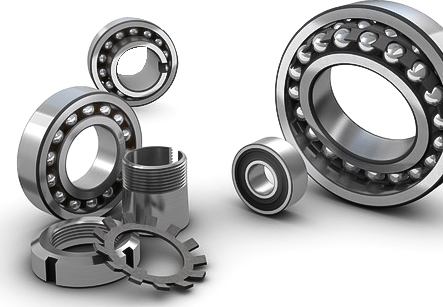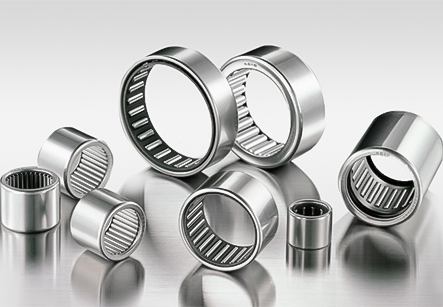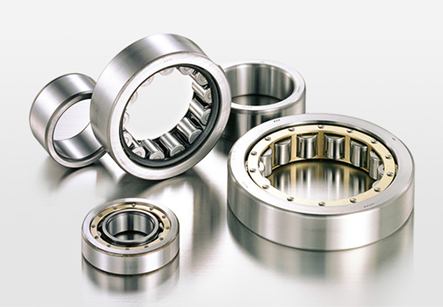Rolling bearings are essential mechanical components that enable the smooth and efficient movement of various machines and equipment. They play a crucial role in reducing friction and supporting loads, making them indispensable in a wide range of industries, including automotive, aerospace, manufacturing, and renewable energy, among others. Rolling bearings consist of two main components: an inner ring, an outer ring, and rolling elements (such as balls or rollers) that facilitate rotation with minimal friction. These products have revolutionized engineering design and are vital in ensuring the reliability, longevity, and performance of diverse applications.
Types of Rolling Bearings
Rolling bearings are available in a variety of types, each designed to fulfill specific application requirements.
Ball Bearings
Ball bearings are perhaps the most widely used type of
rolling bearings due to their versatility, simplicity, and relatively low cost. They consist of steel balls positioned between an inner and outer ring, separated by a cage to maintain proper spacing. Ball bearings can handle both radial and axial loads and are capable of high-speed rotation with minimal friction.
Deep Groove Ball Bearings
Deep groove ball bearings are the most common subtype of ball bearings. They have a deep, uninterrupted raceway groove on both the inner and outer rings, allowing them to support radial loads, axial loads in both directions and even some degree of misalignment. These bearings are commonly used in electric motors, household appliances, automotive applications, and various industrial machinery.
Angular Contact Ball Bearings
Angular contact ball bearings are designed to accommodate predominantly axial loads in a single direction and limited radial loads. They have contact angles between the inner and outer rings, enabling them to support thrust loads and handle combined loads when mounted in pairs. These bearings are commonly found in machine tool spindles, pumps, and automotive applications.
Thrust Ball Bearings
Thrust ball bearings are specifically designed to handle axial loads and consist of two washers and a set of ball elements. They are not suitable for radial loads and are commonly used in applications such as automotive transmissions, thrust fans, and certain industrial machinery.
Roller Bearings
Roller bearings are chosen when higher load-carrying capacity and better shock resistance are required. They use cylindrical, tapered, or spherical rollers instead of balls. Roller bearings are ideal for heavy-duty applications and often have higher stiffness and reduced sensitivity to mounting errors compared to ball bearings.
Cylindrical Roller Bearings
Cylindrical roller bearings have cylindrical rollers as rolling elements and can support high radial loads. They are available in various designs, including single-row, double-row, and full-complement configurations. These bearings are commonly used in applications such as machine tool spindles, gearboxes, and electric motors.
Tapered Roller Bearings
Tapered roller bearings use tapered rollers and are capable of handling both radial and axial loads. They can withstand thrust loads in a single direction and have the ability to self-align during operation. Tapered roller bearings are widely used in automotive wheel bearings, truck axles, and heavy machinery.
Spherical Roller Bearings
Spherical roller bearings have barrel-shaped rollers and are designed to accommodate misalignment between shafts. They can handle high radial loads and moderate axial loads and are commonly used in applications with heavy shock and vibration, such as in mining equipment, crushers, and vibrating screens.
Needle Bearings
Needle bearings are a subtype of roller bearings with cylindrical rollers that have a high length-to-diameter ratio. They are characterized by their compact design and high load-carrying capacity in a limited space. Needle bearings are commonly used in applications such as small electric motors, automotive transmissions, and textile machinery.
Thrust Bearings
Thrust bearings are specialized bearings designed to handle axial loads, often in combination with some radial loads. They come in various configurations, including ball thrust bearings and roller thrust bearings.
Ball Thrust Bearings
Ball thrust bearings consist of steel balls between two grooved washers and are suitable for relatively low-speed applications with light to moderate axial loads.
Roller Thrust Bearings
Roller thrust bearings use cylindrical rollers and can handle larger axial loads. They are commonly used in gearboxes, automotive transmissions, and heavy machinery.
Each type of rolling bearing has its advantages and limitations, making it essential to carefully consider factors like load capacity, speed, operating conditions, and expected service life when selecting the most suitable bearing for a particular application. Engineers and designers must be knowledgeable about these types to ensure optimal performance and reliability in their respective projects.
Applications of Rolling Bearings
Rolling bearings are critical components in a wide range of industries and applications, where they facilitate smooth and efficient movement while reducing friction and wear.
Automotive Industry
The automotive industry is one of the largest consumers of rolling bearings, relying on them for various applications within vehicles. Bearings are found in engines, transmissions, wheel assemblies, steering systems, and suspension components. In engine applications, bearings support the crankshaft, camshaft, and other rotating parts, ensuring smooth and efficient engine operation. In wheel assemblies, bearings enable the rotation of wheels, reducing rolling resistance and enhancing fuel efficiency. Additionally, bearings are used in steering systems, providing smooth and controlled steering movement. Overall, rolling bearings in the automotive industry contribute to improved performance, reduced energy consumption, and enhanced safety.
Industrial Machinery and Equipment
Rolling bearings are widely used in industrial machinery and equipment, supporting critical components and ensuring smooth operation. They are found in pumps, compressors, gearboxes, conveyors, and machine tools, among other applications. In pumps and compressors, bearings support rotating shafts, enabling the transfer of fluids or gases with minimal friction losses. Gearbox applications rely on bearings to support shafts and gears, facilitating smooth gear engagement and power transmission. Bearings in conveyor systems allow for efficient material handling and continuous operation. In machine tools, bearings play a vital role in providing precision and accuracy in cutting, shaping, and milling processes.
Aerospace and Aviation
The aerospace and aviation industries demand high-performance and reliable bearings for various critical applications. Bearings are used in aircraft engines, landing gear systems, control surfaces, and flight control systems. In aircraft engines, bearings support rotating shafts and turbine blades, enduring extreme temperatures and loads while maintaining operational efficiency. Landing gear bearings enable smooth deployment and retraction of landing gears during takeoff and landing. Flight control bearings provide precise movement and stability for control surfaces, ensuring safe and controlled flight maneuvers. The aerospace industry places stringent requirements on bearing performance, durability, and weight, making advanced bearing materials and designs essential.
Renewable Energy
The growing emphasis on sustainable and renewable energy sources has increased the demand for rolling bearings in renewable energy applications. In wind turbines, large bearings support the rotor hub, allowing the blades to rotate and harness wind energy. Pitch and yaw bearings enable the adjustment and orientation of the blades and nacelle to optimize wind capture. Bearings in solar tracking systems allow solar panels to follow the sun's movement, maximizing energy generation. In hydroelectric power plants, bearings are used in turbines and generators to convert the kinetic energy of flowing water into electricity. The reliability and efficiency of rolling bearings are crucial for the success of renewable energy systems.
Robotics and Automation
The rise of robotics and automation in various industries has driven the demand for precise and reliable bearings. In industrial robots, bearings play a key role in supporting robotic arms and joints, providing smooth and accurate movement in manufacturing processes. In collaborative robots (cobots), bearings enable safe human-robot interaction by ensuring smooth motion and precise force control. Automation equipment, such as pick-and-place machines, conveyor systems, and assembly lines, rely on bearings to ensure continuous and efficient operation. The ability of bearings to handle high speeds, loads, and repetitive movements makes them indispensable in modern robotic systems.
Marine and Offshore Applications
In marine and offshore industries, rolling bearings are used in various equipment and systems. In marine propulsion systems, bearings support the shafts and propellers, providing efficient power transmission and reduced friction. Bearings are also employed in winches, cranes, and cargo handling equipment on ships and offshore platforms. Corrosion-resistant bearings are vital in marine applications due to the harsh environment of seawater.

